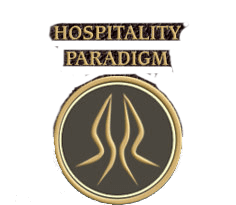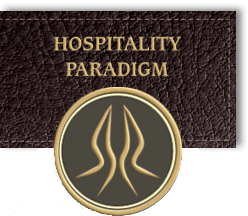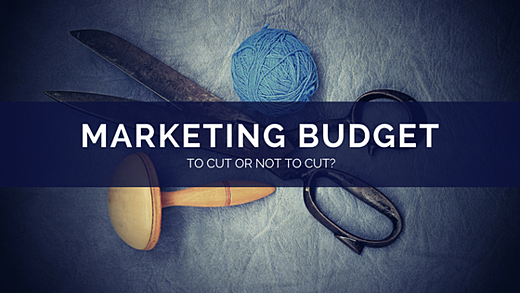How deadly is the paradigm of the seven P’s of hospitality marketing?
Half a century ago, Alvin Toffler in his book Future Shock, was credited with a profound statement. “The illiterate of the 21st century will not be those who cannot read and write. It will be those who cannot learn, unlearn, and relearn.”
These onerous times for hospitality providers suggest one silver lining. It gives us time to re-assess our marketing mix and strategies, even as the pandemic continues to rule the roost. The lean time thus forced upon us offers us plenty of scope to alter our marketing course.
Is your mix of products or services compelling enough for your guest?
To answer this, check if your paradigm of the seven P’s of hospitality marketing is effective and deadly enough. To remain competitive, constantly re-evaluate your business activities for Product, Price, Place, Promotion, People, Process, and Physical evidence.
1. Product: The pandemic has forced us to expand our range of products and services, to save our P&L. We have seen overnight adaptations and new entrants in our product range. Socially distanced products, menus, drive-in services, conveyor & robotic services, cloud kitchens, DIY meals, hygiene, office space are some examples. Some will fade away like a house built on sand as the industry is experimenting and grappling in new territories. Hence the need for constant re-evaluation.
Regularly ask yourselves these questions.
- How best may you evolve your products or services to stay relevant to your guest?
- From the client’s perspective, is your product or service desirable and differentiated enough from anything else available? If so, what is it?
- If not, could you develop an area of differentiated superiority?
- Should you be offering this product or service at all in the current marketplace?
2. Price: An almost non-existent to low demand has collapsed prices like a pack of cards. To feed the cash flow, pricing has been humbled by the drastic tilt in favour of the customer. Market economics flows from the supply-demand curve and the hospitality industry is on the wrong side of this curve. One cannot discount such that you keep losing in this ‘zero-sum game’ with your guest. Yet, discount you must, to claim a stake of the reduced pie.
In this scenario, question yourself:
- How do I establish a value proposition in the customer’s mind that exceeds the price of the product or service?
- What is my base value price (aka reservation price) below which I make losses and must therefore avoid?
- Am I able to identify my customer’s reservation price, i.e. the highest they are ready to spend for my product?
- How do I maintain my positioning and brand personality against my price?
3. Place: Franchising, locational H.K. services, food delivery, outdoor catering, food trucks, online, mobile, immersive through virtual reality, etc. are some examples. Barring a few exceptions, hotels have traditionally used their own location as the sole place to promote their products.
A popular apothegm states “if the mountain won’t come to you, you must go to the mountain.”
We have learned this lesson robustly during this epidemic. Customers have a morbid fear of infection and avoid coming to you; so, we have adapted by going to the customer!
A most recent example is that of a Michelin-starred Hungarian restaurant Costes in Budapest. It is staging a skyline dining event on the Budapest Eye Ferris wheel to generate sales in a coronavirus-proof environment.
Explore the new paradigm for Place in your marketing strategy:
- What creative new distribution options are there for customers to experience your product at their convenience?
- Do these distribution options help overcome the customer’s hygiene concerns?
- Will these new options help increase your market footprint?
- How can location and logistics be custom-crafted to suit both sides?
4. Promotion: This includes all the ways you tell your customers about your products or services and how you then market and sell to them. It is a continuous WIP (work-in-progress) and even small changes in your promotion tactics can lead to dramatic results.
Figure out the following:
- How best can I grab eyeballs and interest my potential customer.
- What is my message strategy? What and how must I communicate it?
- Can I identify my optimum promotional mix (choice of relevant media: advertising, PR, direct marketing, digital marketing, and sales promotion)?
- How to harness the growing power of Digital Media? (Through social media, content marketing, video marketing, influencer marketing, building communities, targeting & retargeting. Also, through contextual messaging to customer cohorts, and hyper-contextualising to segments of your audience)
5. People: In our labour-intensive industry, your employees represent your product. Hence, they impact the customer’s impression of your brand as they represent your company in alignment with broader messaging strategies. This is achievable only when employees feel they are treated fairly and earn wages sufficient to support their daily lives.
Introspect on these:
- In your updated manning, have you processed the right people off the bus and the right people on it?
- Have these right people been given the right seats? Are your employees round pegs in round holes, or are they square pegs?
- What are the skill gaps you need to bridge? Have new skills to service shifting customer expectations and market changes been imparted.
- Are your associate’s interactions with the guest delightful? Are service breakdowns and complaints handled positively?
6. Process: When I wanted to buy an RO filter, top of mind was the brand ‘Kent’ thanks to its effective marketing. I called the toll-free number, sent emails and after a few days of frustrating follow-up, gave up. Eventually, I landed up buying ‘Zero B by Ion Exchange’- a brand that hardly markets itself in comparison to Kent.
Some hotels ask a telephonic banquet sales enquiry client to send their query on email as a verification process. Only then does their banquet sales respond with an offer to the client. Contemplate, how many bookers would abandon the query right at this initial stage!
The best of marketing strategies are of no use if your processes do not serve the customer effectively.
Your SOPs (standard operating procedures) must live and breathe within your team members. Therefore, its effectiveness must be regularly monitored and tracked.
Check your processes for the following:
- Do your SOPs and service mechanisms align with best practices & KPI’s (Key Performance Indicators)?
- How practical are your processes? Do they align with guest delight?
- Are your processes robust, yet flexible enough to empower your people to engineer guest delight?
- Does the team regularly assess the RCA (root cause analysis) and OFI (opportunities for improvement) of failures?
7. Physical Evidence: In light of the worldwide epidemic, physical evidence takes a premium position. Over 90% travellers today consider hygiene and health safety as one of three considerations before utilizing travel and hospitality services. They look for touch-free, sanitised physical spaces, minimised and socially distanced services, sanitised and sensitised associates, contactless technology, etc.
Understand better, in light of today’s crisis:
- How do you reassure your customers of the environment/place you provide for them?
- Is your facility, website, design, spatial layout, signage, and packaging attuned to the current need of the guest?
- Are the ambient conditions in keeping with the health and hygiene of the guests?
- Have you been able to minimise physical touch points using technology and simplified processes?
Keep in mind that these seven deadly Hospitality Marketing P’s aka ‘marketing mix’ revolve around your guest. Also, do not lose sight of your core business model, for, in the long-term, it is your fulcrum.
Four teasers are posed for each of the above variables in the mix. Bench-press and challenge yourself for many more, along with your core team. The final marketing mix evolving from this effort must be tweaked constantly, yet principally to the guest psychographic and demographic. This is when the seven P’s of your Hospitality Marketing Mix will remain deadly and competitive.
In summary, the literate marketer always will be one who learns, unlearns, and relearns his marketing mix!
This article has appeared in ET HOSPITALITY WORLD.COM January 2021





